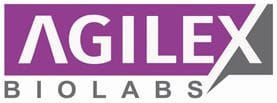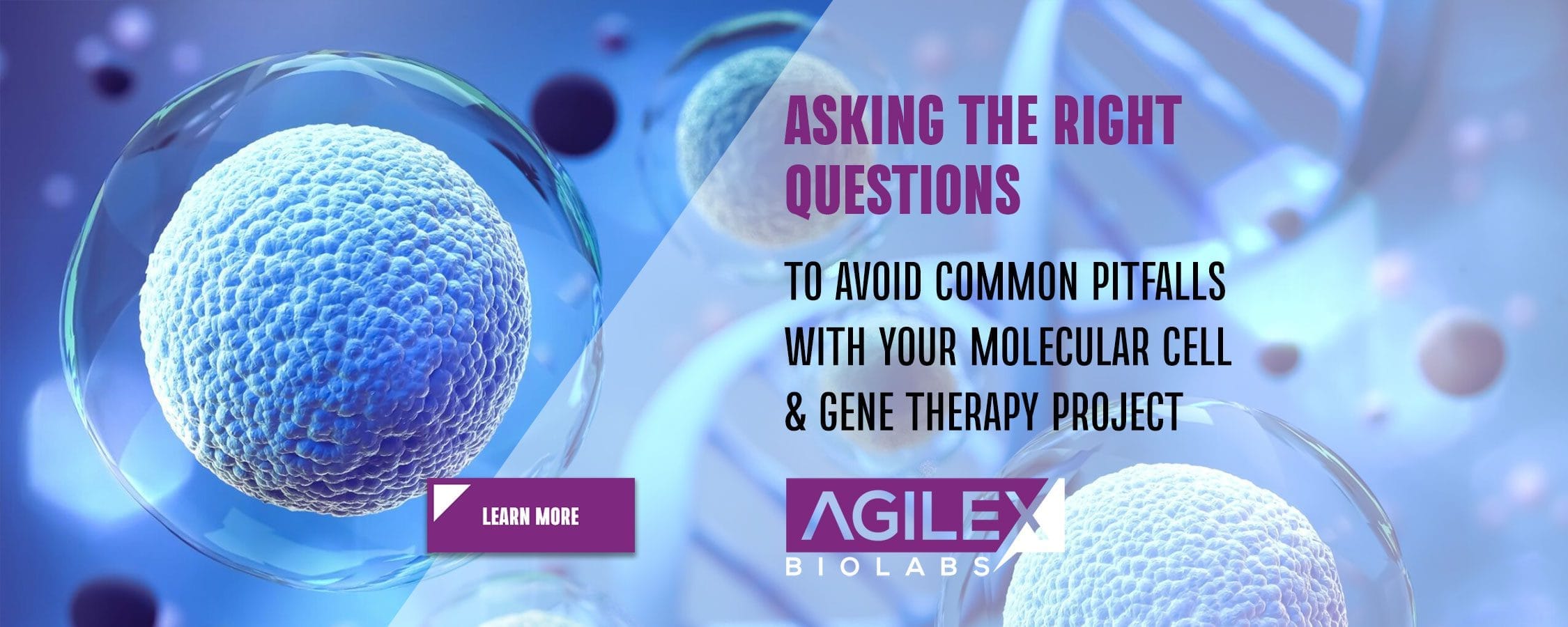by Kurt Sales
The rise of Cell and Gene Therapy products is increasingly becoming more prevalent. At Agilex we are seeing more and more of these programs coming forward now. Some might be modulators of a specific mRNA to shut down a protein or production of a protein, or it might be something where a client is using an mRNA method for replacement therapies to address diseases such as muscular dystrophy, for example, wherein dystrophin is dysregulated and the goal is to “switch on” the appropriate protein as opposed to the mutant protein. The solution potential for this growing field seems almost limitless.
But needless to say, with all these relatively new projects come an equal set of challenges.
When considering these challenges many begin to experience with their molecular cell and gene therapy projects, it’s important to use the most appropriate tools to answer the questions that come up – and to know the right questions to ask…
“What is it that the sponsor is asking?”
“What is it that they’re ultimately looking to measure?
…based on the answers to these questions, we will be able to tailor appropriate solutions.
Agilex has highly sophisticated qPCR / ddPCR instrumentation that essentially amplifies a series of base pairs, and allows us to perform absolute quantification of a target gene. Typically with a cell and gene therapy product, you’re either measuring the product or you’re measuring something that is derived as a consequence of the cell and gene therapy. It might be differential regulation of a target gene, for example. In that case, we would be amplifying that by PCR and the question would be…
“What is the relative abundance of that transcript going to be in order for us to identify whether to use a classical quantitative PCR approach?”
This requires a standard curve that we extrapolate the data from. Alternatively, we might use a digital PCR approach, which is absolutely quantitative and super sensitive. So those are the questions we ask when faced with these initial requests.
After establishing some of these answers, we then ask
“What is the cell and gene therapy program actually doing?”
“Is it modulating the immune system?”
“Do we need to consider immune profiling?”
“Are there flow cytometry assays that need to be set up?”
If so, then…
“What are the immune cell targets the cell and gene therapy program is going to either interfere with or modulate?”
By asking these questions and gathering all of this information, we can put together a program that will be appropriate for what the sponsor is trying to achieve in their clinical trial. The clinical trial is all about the safety and the efficacy of that cell and gene therapy program. Sometimes it can be difficult to measure this in a classical Pharmacokinetic manner because of the short halflife of the viral vector-delivered cargo or cargo encapsulated within a lipid moiety..
Fortunately, because Agilex has such sensitive tools – such as the droplet digital PCR – we can set up assays forbiodistribution to determine the abundance and tissue distribution of a viral vector-derived method of delivering the cargo and we can look at viral shedding, meaning we can analyze distribution within various tissues and compartments within the blood. We can then look at whatever the cell and gene therapy program is doing to the body – in terms of pharmacodynamics – by modulating pathways, and modulating the immune system. We do this with our suite of immunobiology technology such as flow cytometry, ELIspot, ddPCR, etc. Then we can look at various other biomarkers that might be modulated, such as soluble biomarkers like proteins, cytokines, chemokines.
When conducting these highly technical and advanced processes, the factor that differentiates Agilex from the others trying their hand at this is our experience, our background, and our pursuit of the regulatory guidelines that the industry is just establishing for some of these methods associated with cell & gene therapy. We attend the EBF, the WRIB, and other conferences like them. We actively take part in the discussions that are answering these new questions… and establishing the next set of questions to ask as we carry on. We are actually going to these meetings and we are discussing it with our peers and the regulators. While many in the industry are just getting their feet wet in some of this new technology, Agilex has already published documentation about the best way to address the challenges faced by our colleagues.
To see case studies developed by Agilex, click here.
With so many possibilities yet to discover in the field of cell and gene therapy, the likelihood is great that the industry will continue its drive interest to these studies and technologies. If you want to go with a provider who has been helping customers meet their needs for over 25 years, trust in the experience of Agilex.
Let us schedule an evaluation of your project today. Click here to set up an appointment with our specialists.



